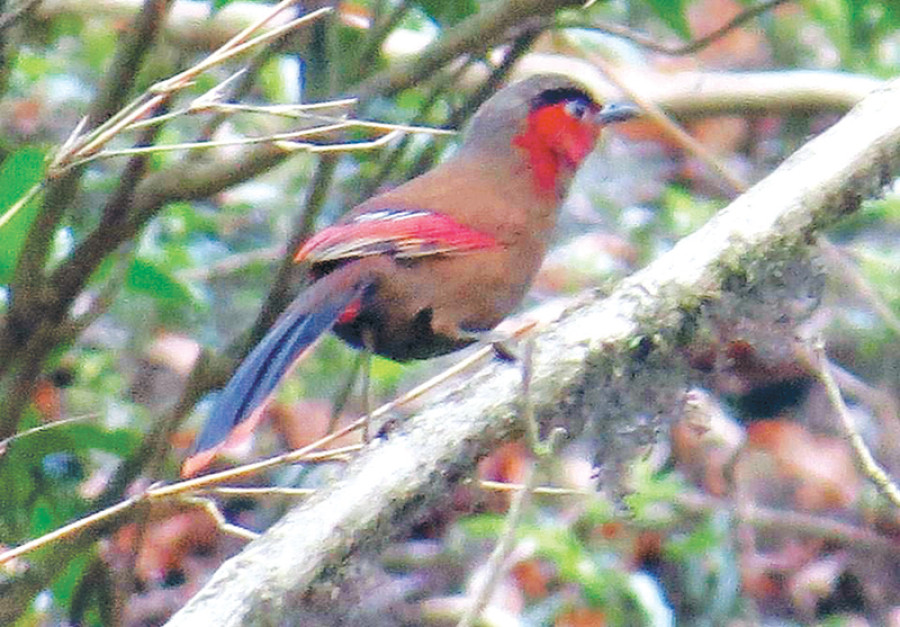National
‘Extinct’ bird sighted after 178 years
Ornithologists are flying high after a bird believed to be locally extinct was spotted for the first time in 178 years.
Bimal Khatiwada
Ornithologists are flying high after a bird believed to be locally extinct was spotted for the first time in 178 years.
Hem Sagar Baral, country manager, Zoological Society London, and his colleagues were on a 10-day bird watching holiday tour when they had a chance sighting of red-faced liocichla (Liocichla phoenicea) in the forest of Darhakhani Chisapanitar in Upardang Gadi, Chitwan district.
“We were excited when we first spotted a pair of red-faced liocichla in the forest. The sighting of the bird after more than a century and a half has raised hopes of finding more such species that have not been sighted for a very long time,” said Baral.
Later, when the ornithologists returned to the area, they spotted as many as eight red-faced liocichla birds that have distinctive red plumage.
The bird species, recorded at an altitude of 1,800 meters from sea-level, prefers habitats in leaves of large trees and bamboos.
The first sighting of this bird species belonging to Babbling laughingthrush family was recorded in east Nepal by a British ornithologist in 1838.
“It is very shy kind of bird and is mostly solitary, sometimes found in pair and small flocks,” Baral said.
Though Nepal is considered to be the origin of this bird species, it is widely distributed in India, Bhutan, Myanmar, Bangladesh and China.
Rufous-necked hornbill, Pink-headed duck and Black-breasted parrotbill are among the important bird species that have been locally extinct from Nepal.
Out of total 878 bird species recorded in Nepal, 167 species are facing severe threats for survival due to problems ranging from habitat loss and degradation to climate change, according to the first ever assessment of the national conservation status of Nepal’s birds released in March 2016.
Large birds such as birds of prey, storks and pheasants that are found in lowland grassland are the most threatened species followed by wetland birds and tropical and subtropical forest birds.




 13.12°C Kathmandu
13.12°C Kathmandu















